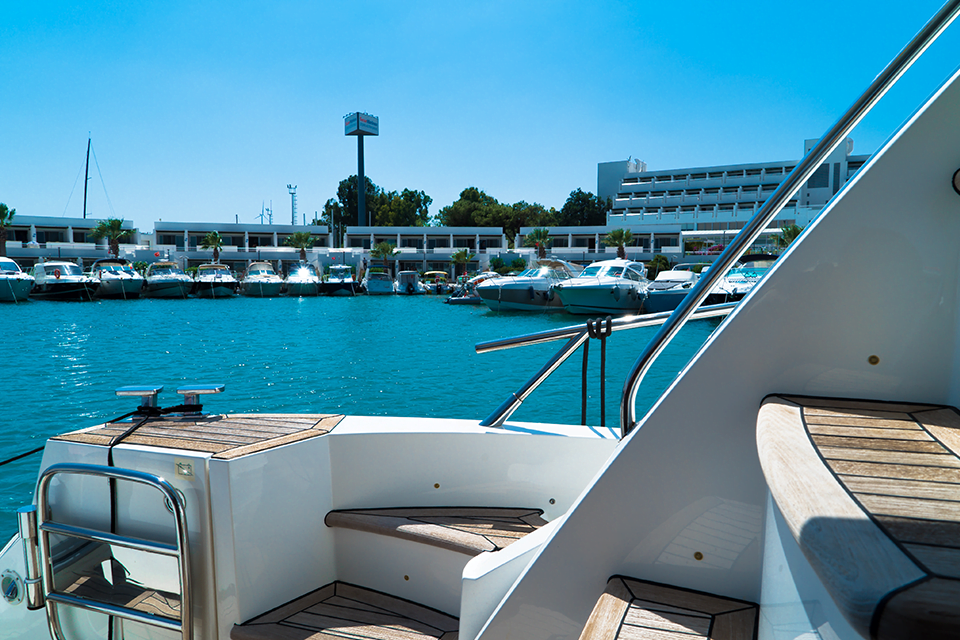Exploring the seas with your own yacht is one of the most exciting experiences you’ll ever get to have. The ability to travel wherever you want in style and luxury is something many people aspire to and relished by those who can. However, maintaining a yacht also entails a number of responsibilities to keep it seaworthy which can be intimidating at first but you’ll soon realize that it’s similar to keeping your car in top shape albeit a really big car. Here are some of the things that you’d want to keep an eye on in your yacht:
Table of Contents
1. Engine
Your yacht usually comes with a manual that can guide you as to how and when to send it for maintenance. There are two common issues when it comes to your boat’s engine:
A. Fuel Problems
To avoid problems in your engine pertaining to fuel, make sure you only fill her up with gasoline that doesn’t contain ethanol. If there is no alternative, use fuel with at most 10% ethanol in them as there are no certified marine engines that work on more than 10% of ethanol. So make sure you buy gas from docks or any gas station.
Using an additive to act as a fuel stabilizer is also helpful. This is, of course, if you plan on not using your yacht for a week with fuel. Gasoline has the tendency to oxidize and form pesky deposits that’ll affect your fuel system after a couple of weeks.
You may also want to put a 10-micron filter separating the fuel tank and the engine. It’s advisable to get one with a spinning element. This will help prevent fine particles from getting into the engine.
B. Battery
Replace the cranking battery with a newer marine battery, preferably, one with thicker plates and a sturdier build. This will help it withstand vibration and jostling that the seas can throw at it. Make sure you get a good battery tray for your main marine battery. One with thicker plates or is bolted to the boat. You don’t want it to bang around when in rough waters.
Make sure you also check the terminals on your battery to see that it’s free of corrosion and is snugged well into the cables. You may also want to install a maintenance-free battery charger. This affordable type of battery can help maintain your marine batteries by providing a constant charge between trips.
2. HVAC and Refrigeration
Your HVAC system is important to keeping your yacht’s interior a comfortable environment. Regularly check its air grille and clean off the dust and debris trapped on it to prevent the dirt from circulating around the system. The yacht’s air conditioner needs adequate amounts of water to run. The water that helps cool down the refrigerant back to a liquid state comes from the sea or the ocean and runs through a strainer. Make sure you clean the strainer at least once a month to make sure you get enough water to the airconditioning unit. There are some routine maintenance checks that are best left to professional marine airconditioning technicians to perform. Many large yacht owners, as well as smaller boats, dock in San Diego to receive such necessary inspections in their HVAC.
Many large yachts use bigger refrigerators and freezer units. It’s important to regularly have your freezer checked and get the repairs needed from specialists in marine refrigeration in San Diego. Many owners and industry giants turn to professionals for maintaining critical and complicated components in their yachts.

3. The Boat’s Hull
The hull is one of the most critical parts of your boat, it keeps your vessel and all its passengers afloat. However, maintaining it is a big task but getting to know your hull will help you optimize your tasks. First off, you may want to do all the inspections and repairs on dry land so have a scheduled docking during the off-season when it’s not suitable to travel the ocean. Also, know what material is used and protective coating that you can use to stave off wear. Clean the hull with fresh water from time to time, to lessen the chances of corrosion due to salt. Inspect carefully both above and below the hull to spot some damages and repair them immediately.
4. Oil And Filter
Just like a car, you’ll need to be on schedule with your oil change. Start the engine for about 10 minutes and then shut it off. Place a container under the oil tank and remove the drain plug. It’s going to take you more than 30 minutes, depending on the size of your vessel, to drain most of the oil so you can spend that time changing the oil filter. After draining the oil, replace the drain plug and refill the tank with the appropriate oil.
There are still more things to consider when keeping your yacht in top shape and you’ll get the hang of it given the time. Understandably, not everyone is technically inclined to get down and dirty in maintaining their yacht. Others may be more academic in their strengths that is why it’s important to consult professionals for parts that may be beyond your scope.





